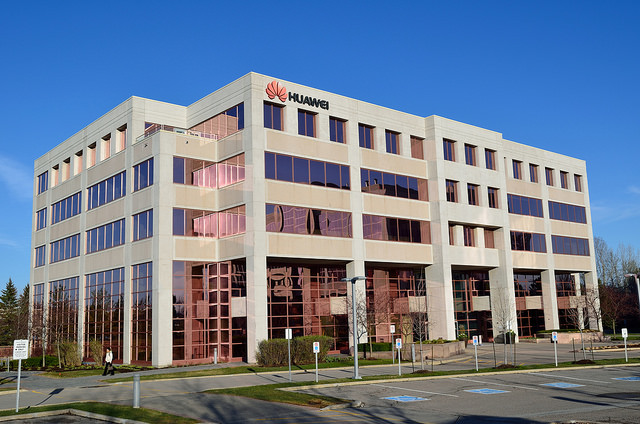
Scott Morrison took a step last week that will define him as prime minister, but it wasn’t about getting party room numbers. It was his announcement as acting minister for home affairs that effectively banned two big Chinese telcos—Huawei and ZTE—from selling 5G in Australia.
This was big news for three reasons: the centrality of fast, secure 5G technology to Australians and Australian businesses; the policy message it sends to Beijing; and the direction it sets for Australia’s future economic and communications partnerships.
5G communications systems are not just about curing blackspots and increasing bandwidth for Netflix and Stan. 5G will be Australia’s data central nervous system, connecting businesses and families to the internet in much deeper ways than the current 4G/NBN networks. The security issue comes from the nature of 5G technology and that of the Chinese state.
Huawei is a provider of systems, components and services to Optus’s, Vodafone’s and TPG’s 4G mobile networks, which support millions of Australians and thousands of Australian businesses. Under this model, network equipment used by telecommunications operators has been categorised by the network providers as either the ‘core’ or ‘edge’ network. Having a clear boundary between the core and the edge has allowed operators to have effective technical controls to protect the security data and functions in the core. The operators’ networks then connect into the NBN. In 2012, Labor banned Huawei from supplying systems for the NBN.
Sensitive data, including confidential information of individuals and businesses, and functions such as authentication and access control, are in the physically and logically separated core network.
The design of 5G removes the distinction between the core and edge. As Morrison said last week, the new network ‘would render these current protections ineffective in 5G’. He said the ‘government has found no combination of technical security controls that sufficiently mitigate the risks’.
He’s on solid ground here. In Britain, where Huawei is a core supplier, the latest oversight report from that government’s cyber watchdog said ‘it is less confident that NSCS and HCSEC can provide long-term technical assurance of sufficient scope and quality around Huawei in the UK’.
It identified ‘a further medium-term issue [in] the shift in architecture and technology brought about by … edge compute architectures such as 5G’. That’s as close to alarm bells and flashing lights as a top-secret government agency gets in a public report.
No doubt faced with similar advice, Donald Trump just signed a law prohibiting his government from buying telecommunications equipment or services from China’s Huawei and ZTE and from companies doing business with them.
So why are Huawei and ZTE different from other suppliers? As our new prime minister put it, ‘The government considers that the involvement of vendors who are likely to be subject to extrajudicial direction from a foreign government that conflict with Australian law may risk failure by the carrier to adequately protect a 5G network from unauthorised access or interference.’
This looks very much like a reference to China’s National Intelligence Law, which requires all Chinese companies to comply with Chinese intelligence agencies’ demands—and 5G networks and services provide compelling opportunities for those agencies.
Banning two big telcos tells Beijing that its drive to gain strategic and economic advantage through the next wave of internet technologies can’t happen in a way that undercuts Australians’ national security.
Australia’s decision has been received in odd and expected ways in Beijing. The first, odd, reaction was in the Communist Party’s strident mouthpiece, the Global Times, expressing disappointment that Australians won’t get cheap Huawei services.
That swiftly moved to more predictable if concerning statements, also in the Global Times, such as ‘Canberra stabs Huawei in the back’ and ‘those who willfully hurt Chinese companies with an excuse of national security will meet their nemesis’.
The Global Times claimed Huawei is ‘a company that embodies China’s reform and opening up’. China’s leaders know this is disingenuous. Beijing’s track record on ‘opening up’ to non-Chinese providers is of partnerships subject to deep control by Chinese authorities and technology transfer to the Chinese entities.
More interestingly, the article asked, ‘Will the move cause a domino effect in Western countries?’ This gets to a real concern for China’s leaders about the precedent effect of the US and Australian decisions.
These fit with rising global concern about how the Chinese state is using its power. Chinese assertiveness under President Xi Jinping’s One Belt, One Road China-centred infrastructure initiative has provoked unease in countries from Sri Lanka to Malaysia, and even Tonga.
Add to this the glimpses we are gaining into China’s use of digital technologies through ‘social credit’ to control its citizens and its electronically enabled surveillance and repression of millions of Uyghurs.
So, Xi is right to worry if the reality of the Communist Party in action looks very different from the ‘win–win’ words of his ‘China Dream’. This goes well beyond the Australia–China relationship.
Morrison has set a course in managing the relationship that will welcome our valuable two-way trade in resources and services, based on us selling world-class items that China needs at globally competitive prices. But he’s also laid out clear markers that where our national interests differ—as they do in questions of deep access to, and potential control of, our critical infrastructure—he will put national interests first.
Refreshingly, he won’t pretend that repetition of slogans such as ‘win–win’ and ‘mutual benefit’ will make everything okay, even if it’s the ‘correct line’ that Beijing wants to hear.
The future directions for broader economic and technology policy seem clear. They align with the government’s big strategic direction to work with partners to advance a ‘free and open Indo-Pacific’.
This is a vision of broad economic and security partnerships, not deep dependency on single markets and partners. That drive towards economic diversification is one we’ll probably hear a lot more of as the new Morrison government gets underway.

